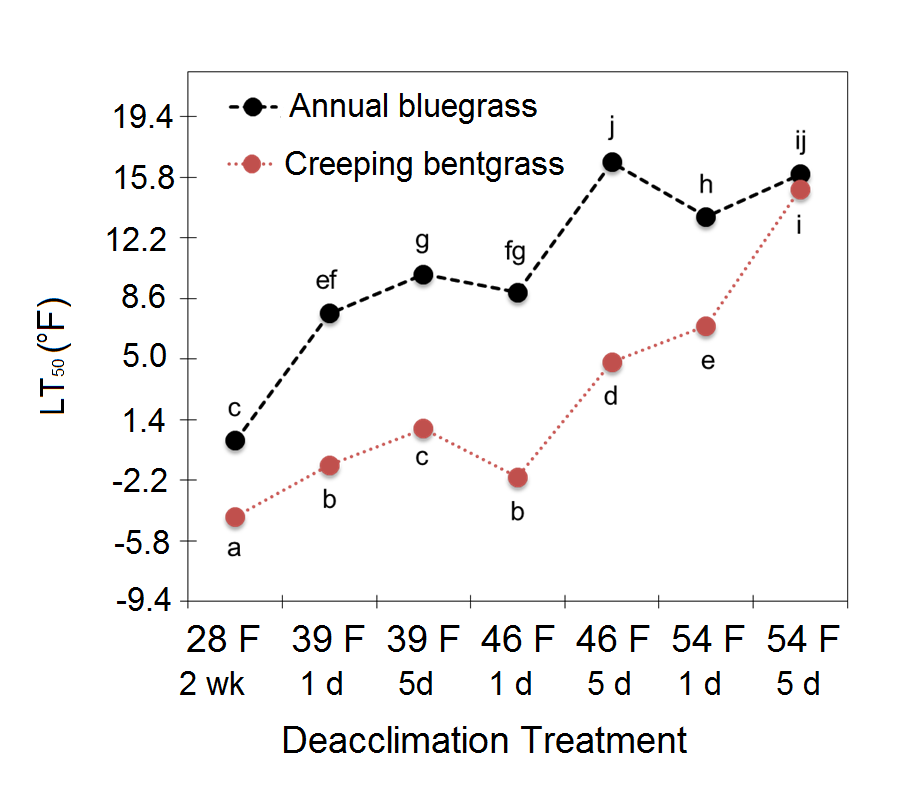Photo Caption: The response of annual bluegrass and creeping bentgrass to deacclimation temperatures of 39, 46 and 54 degrees F following acclimation at the subfreezing temperature of 28°F. Field observations suggest that annual bluegrass and creeping bentgrass differ in their capacity to resist deacclimation, which can contribute to observed differences in winter injury.
Field observations suggest that annual bluegrass and creeping bentgrass differ in their capacity to resist deacclimation, which can contribute to observed differences in winter injury. The researchers would like to understand the factors that trigger deacclimation in grasses and to identify plant traits that contribute to enhanced deacclimation resistance and freezing tolerance. They are focusing on the effects of different above-freezing temperature combinations that result in deacclimation of creeping bentgrass and annual bluegrass, as well as changes in sugar and protein amounts within the plants.
The two grasses were cold acclimated at 36°F followed by 28°F in growth chambers. Then various deacclimation treatments consisting of different temperatures and durations tested the grasses. Researchers found better freeze tolerance for bentgrass (-6°F) compared to annual bluegrass (0°F). Along with less cold acclimation, annual bluegrass exhibited a greater loss in freezing tolerance in response to 39 ° F temperatures (Figure 1). The temperature required to induce greater losses in freezing tolerance was lower for annual bluegrass compared to creeping bentgrass.
Total
soluble sugars increased during cold acclimation for both grasses, with higher
levels found in bentgrass. In response to deacclimation, bentgrass maintained better
freezing tolerance compared to annual bluegrass, which was associated with the
maintenance of higher concentrations of soluble sugars.

|
| Better freeze tolerance (LT50) occurred for creeping bentgrass compared to annual bluegrass. Along with less cold acclimation, annual bluegrass exhibited a greater loss in freezing tolerance in response to 39°F temperatures. Annual bluegrass lost freezing tolerance at lower temperatures compared to creeping bentgrass. Observed results followed by the same letter are not significantly different from each other. |
Additional Information:
Physiological factors associated with perennial ryegrass freezing tolerance

